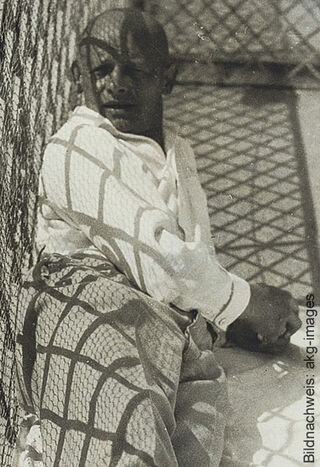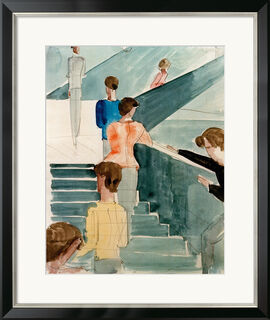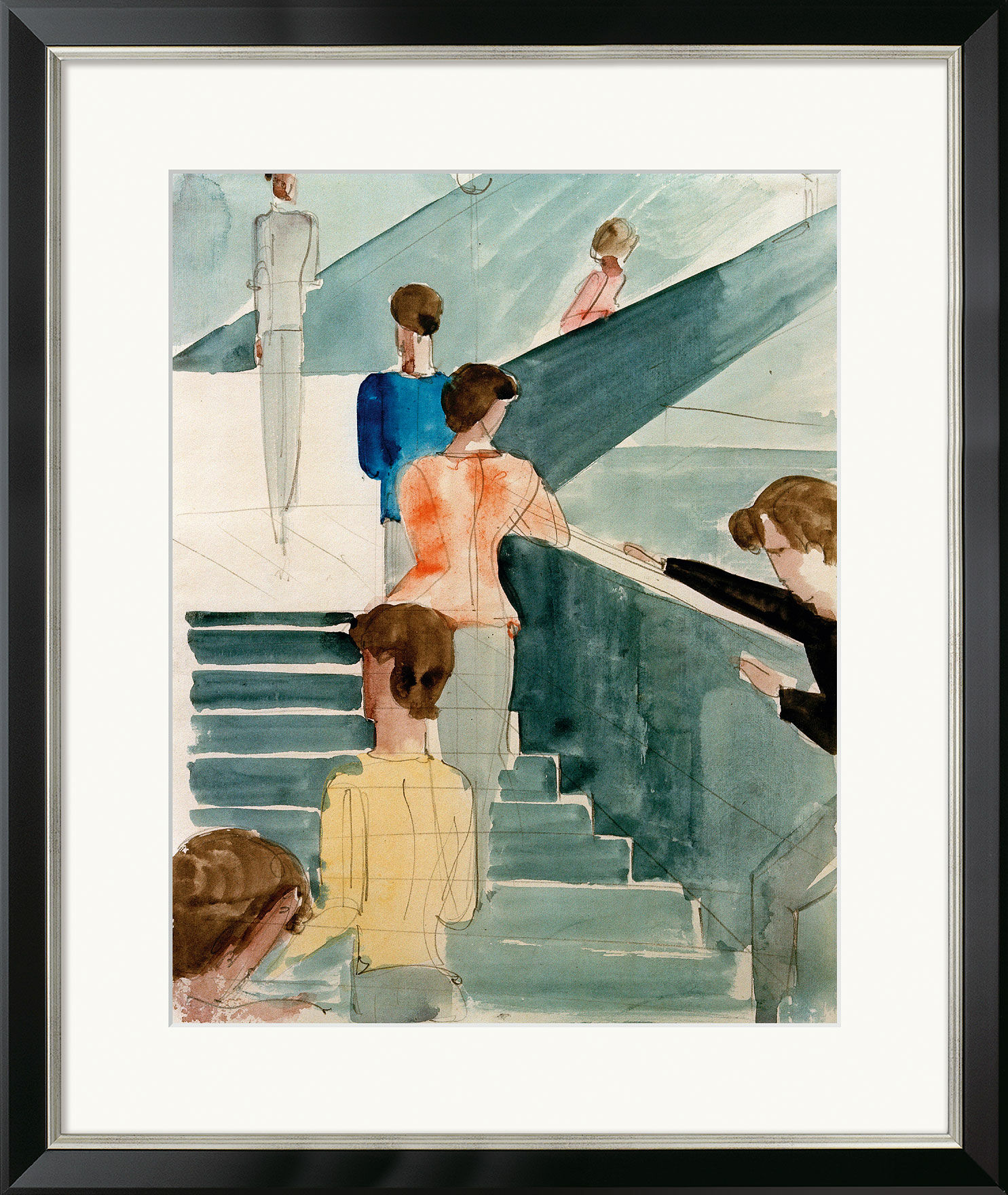Picture "Bauhaus Staircase" (1931/32), black framed version


Picture "Bauhaus Staircase" (1931/32), black framed version
Quick info
limited, 499 copies | numbered certificate | reproduction on watercolour paper | framed | passe-partout | glazed | size approx. 69 x 58 cm (h/w)
Video
Detailed description
Picture "Bauhaus Staircase" (1931/32), black framed version
Original: 1931/32, watercolour and ink over pencil on writing paper with linen embossing, 27.7 x 21.9 cm, privately owned, private collection.
High-quality reproduction on heavy Hahnemühle real handmade watercolour paper. Limited edition of 499 copies. With numbered certificate on the back. Framed in a fine solid wood frame in black satin with Munich silver. With bevel cut passe-partout, dustproof glazed. Size approx. 69 x 58 cm (h/w).
Frame configurator
Customised picture frame

Frame configurator
Customised picture frame






Customer reviews
Frame variant: Framing 1

About Oskar Schlemmer
1853-1934
His project was "the human being". He depicts the human being without expressive expression, as an "art figure", insisting that in our highly complex time, the human being is still the ideal aesthetic measure of all things.
"I want to create types of humans, not portraits… I want the essence of space, not interiors," that is how Oskar Schlemmer summarised the approach of his art. His subject is figures and their relationship to the space around them. It would be wrong to see anonymized, even alienated people in these carefully composed mannequins. It is no coincidence that they are reminiscent of archaic models that Schlemmer revered as the highest expression of the human form.
For a long time, Oskar Schlemmer’s works were not comprehensively exhibited, and even basic scholarly publications were difficult. The reason: Schlemmer's second-generation heirs repeatedly withdrew loans from museums and sometimes even prohibited reproductions. This made the great Bauhaus artist a "famous unknown". While individual works, such as the "Bauhaustreppe" (Bauhaus Stairway), attained iconic significance, another part of his oeuvre virtually disappeared from contemporary consciousness. This changed only recently.
In 2015, 70 years after his death, the Stuttgart State Gallery dedicated a globally respected exhibition to Oskar Schlemmer, whose catalogue was finally able to offer a comprehensive, richly illustrated presentation. He was also once again perceived beyond specialist circles as the great master of modernism, to be mentioned with his Bauhaus colleagues Kandinsky and Klee.
Depiction of typical scenes from daily life in painting, whereby a distinction can be made between peasant, bourgeois and courtly genres.
The genre reached its peak and immense popularity in Dutch paintings of the 17th century. In the 18th century, especially in France, the courtly-galant painting became prominent while in Germany the bourgeois character was emphasised.
Collective term for the painters and sculptors of the 20th century, such as Pablo Picasso, Salvador Dalí, Joan Miró, Marc Chagall and others, whose works are the most recognized in our times.






